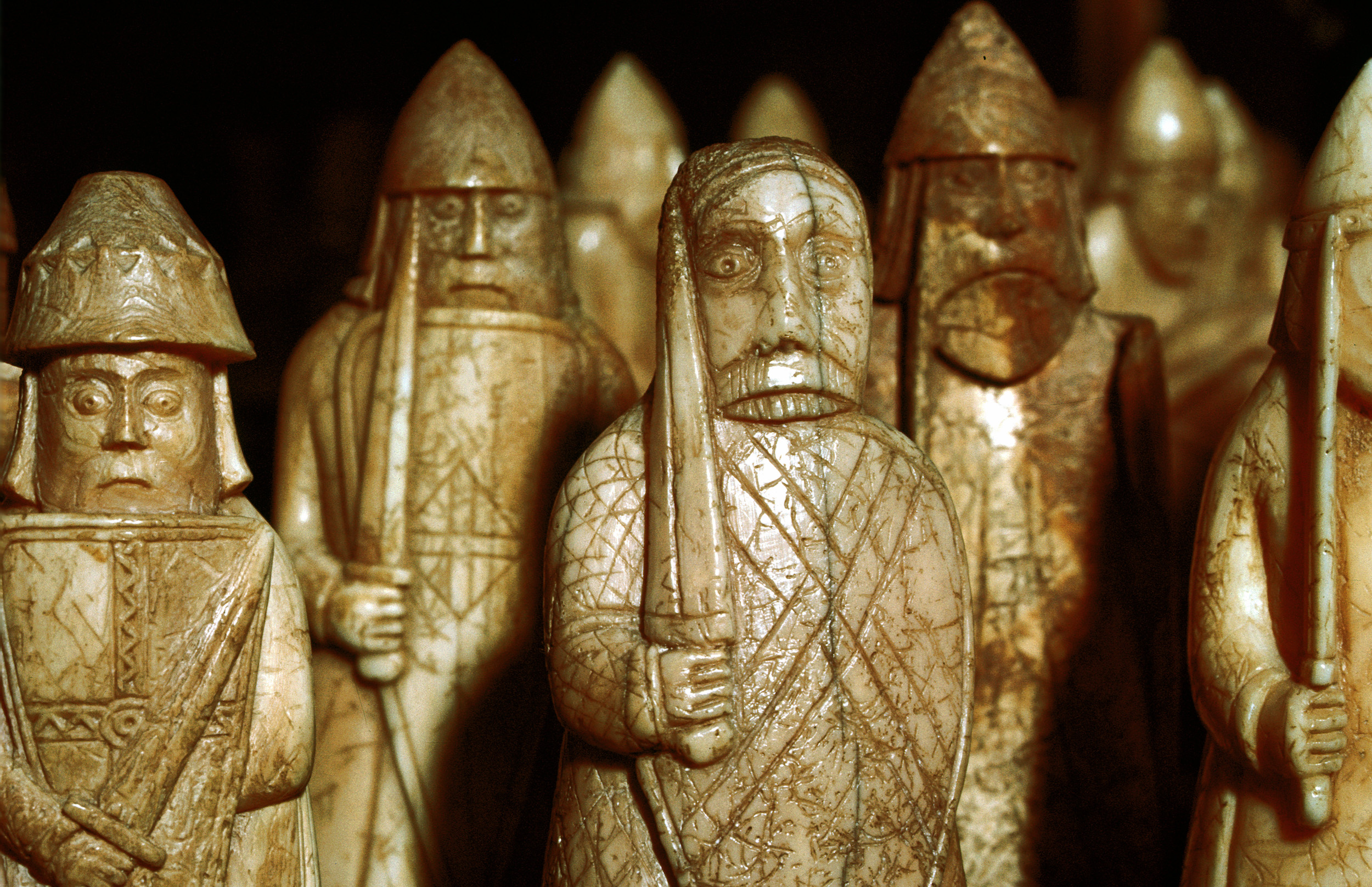In 1831, Malcolm “Sport” MacLeod made an unusual discovery in the sand of Camas Uig (Scotland): a hoard of 93 artifacts, most carved out of walrus ivory: 78 chessmen, 14 tablemen (for other games), and 1 belt buckle. Dating from the twelfth century, the unusual game pieces most likely were made in Trondheim, Norway, and because they show signs of minimal wear, scholars believe that they were probably lost by a merchant on the way to popular nearby trade centers. The hoard contained eight kings, eight queens, sixteen bishops, fifteen knights, twelve rooks, and nineteen pawns. Because so many of the pieces were duplicates, and together they would not build a complete game, they were likely replacements or duplicates meant to be sold to avid game players. Many of the pieces have traces of red and white paint, likely to distinguish the two opposing sides of the game.




Lewis Chessmen
Walrus Ivory and Whales’ Teeth • 3.5 to 5.8 cm (smallest pieces) to 7 to 10.2 cm (largest pieces)
The chessmen, all of which are human figures with the exception of the pawns, feature vivid, contemporary imagery. The soldier-style pieces, for example, feature armor and weaponry identical to items and styles found in archaeological sites in Norway dating from the same period. Knights, which are mounted figures, carry spears and shields, while the rooks, all of which are foot soldiers, carry shields and swords; four of them portray berserkers biting their shields. All pieces have striking facial expressions complete with an unforgettable, piercing gaze. Today, you can find these remarkable game pieces distributed between the British Museum (82 pieces) and the National Museum of Scotland (11 pieces).
 Unknown Artist
Unknown Artist